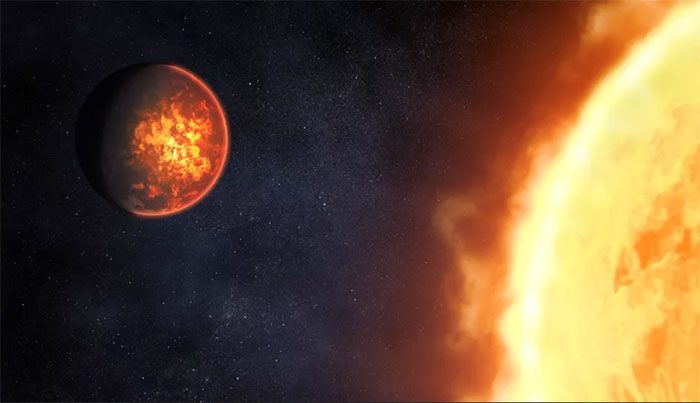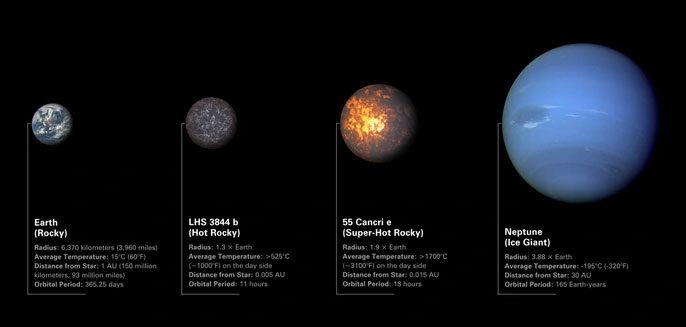The James Webb Space Telescope Will Explore New Worlds with Unprecedented Detail.
Rocky planets are inherently more challenging to observe than gas giants with current astronomical technology due to their lower average brightness. However, equipped with a large mirror and positioned favorably, the James Webb Space Telescope will be able to reach distant planets.

Planet 55 Cancri-e has a structure quite similar to that of early Earth. (Photo: NASA).
Among the planets within the “sights” of astronomers, 55 Cancri e stands out as a super-hot planet covered in lava, alongside LHS 3844 b, a planet lacking an atmosphere. These are the two planets that the James Webb Telescope will observe as soon as the observatory is operational.
Initial descriptions indicate that 55 Cancri e orbits its parent star at a distance of 2.4 million kilometers, which is about 4% of the relative distance between Mercury and the Sun.
This planet has a surface temperature above the melting point of most rocks, with one side perpetually facing the scorching Sun. However, observations from the Spitzer Telescope previously revealed cooler spots in the hottest regions of the planet.

Size comparison of two strange planets with Earth and Neptune in the Solar System. (Photo: NASA).
Scientists suggest that this compensatory heat may be due to a dense atmosphere that redistributes heat around the planet, or it could result from lava rain occurring at night, which removes heat from the atmosphere.
In contrast, LHS 3844 b is significantly colder, and observations from the Spitzer Telescope indicate that this planet has no atmosphere. However, scientists hope to capture signals from the planet’s surface using spectroscopy, which will help identify the elements present on the planet.
“The exploration of these two planets is expected to provide us with wonderful new insights into planets with Earth-like structures in general, thereby enhancing our understanding of Earth’s formation history from its early days,” said Laura Kreidberg, the lead astronomer of the project.
It is known that the James Webb Telescope is currently completing its initial operational processes and will immediately transition to its first observation cycle in June of this year.





















































